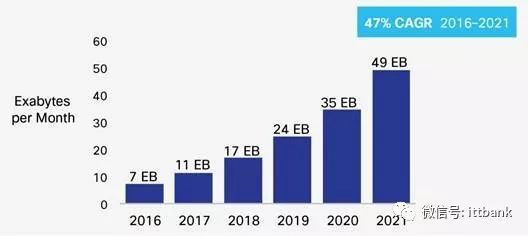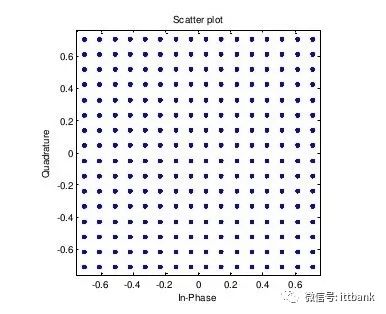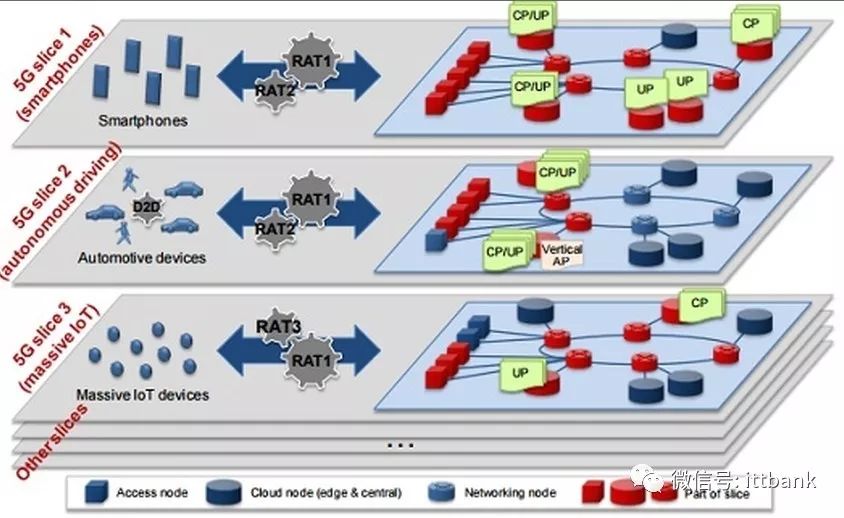5G will have a huge breakthrough compared to today's LTE-Advanced network. Therefore, it is necessary to study the five key areas that will help lead the 4G to 5G transformation. Four of these five areas will make this transition through an intermediate phase transition called LTE-Advanced Pro (4.5G), which makes the revolution more gradual.
It is widely believed in the industry that 5G mobile communications will not be available until 2020 or 2021, and will not be widely available even then. However, as mobile data traffic continues to grow (18 times over the past five years), it is expected that 5G will come faster than ever. Cisco predicts that by 2021, 5G connections will generate 4.7 times more traffic than normal 4G connections. Figure 1 shows this growth.

Figure 1: Mobile data traffic continues to grow. (Source: Cisco)
5G will have a huge breakthrough compared to today's LTE-Advanced network. Therefore, it is necessary to study the five key areas that will help lead the 4G to 5G transformation. Four of these five areas will make this transition through an intermediate phase transition called LTE-Advanced Pro (4.5G), which makes the revolution more gradual.
Speed ​​and feed
In this area, access technology will increase from 1 Gbps for LTE-Advanced to 20 Gbps throughput/downlink rate per cell for 5G. To achieve this speed, we need to go through multiple stages from LTE-Advanced Pro. LTE-Advanced Pro has been defined in the current specification, which uses carrier aggregation (up to 32 carriers), massive MIMO (multiple input and multiple output) up to 16 antennas, and higher order modulation schemes (see figure A variety of technologies, such as the 256 QAM shown in 2, can achieve a 3 Gbps rate.

Figure 2: 256 QAM is a technology that 5G will use to increase data rates.
The 3Gbps data rate can be achieved without major changes to the radio technology. This is the intermediate stage that every operator must take to leverage its current infrastructure and lay out 5G ahead of time.
Unauthorized spectrum usage
Currently, several major carriers, including T-Mobile and Verizon, are deploying LTE (LTE-U) unlicensed spectrum, and AT&T is actively pursuing virtual machine solutions for this issue.
To achieve higher throughput requirements, the licensed carrier spectrum is not sufficient. Wi-Fi (a distant relative of cellular communications) has been using unlicensed spectrum for many years.
I refer to Wi-Fi as a "distant relative" of cellular communications because it is very similar to the licensed carrier spectrum except for unregulated. Wi-Fi is free, so until recently, quality was basically not a problem. Operators have begun to launch hotspots to offload cellular traffic to Wi-Fi as much as possible, thus putting additional pressure on the network. However, Wi-Fi has many unlicensed spectrum that can be utilized by LTE.
Because end customers and operators are not overly concerned about the quality of this “free service,†the past is generally acceptable in residential environments. But in the past few years, this mentality has changed due to technological improvements in Wi-Fi technology for better quality and standardized access:
• Correction is performed using a polar code such as LDPC (Low Density Polarity Check Code).
• Higher-order QAM, Wi-Fi, currently achieves 256 QAM and is about to reach 1024 QAM.
• 4×4 MIMO and multi-user MIMO to increase throughput and work with more users.
Extending the concept of carrier aggregation to unlicensed carriers (same spectrum as used in Wi-Fi) will provide operators with more options to increase cell bandwidth.
For the vast spectrum of resources in today's unlicensed spectrum, as well as new resources to be released, in addition to finding ways to offload billions of IoT devices, 5G networks will also use this space to achieve ultra-high-speed access requirements.
IoT device
IoT devices present a variety of requirements and challenges.
• There is no doubt that massive devices will pose a huge challenge to 5G networks.
• Unlike traditional cellular devices, IoT devices are inherently very fragmented. Many IoT devices are "sleeping" for a long time before sending a small amount of byte data. 5G networks need to plan for communications that are infrequent but important to these devices.
• IoT devices also provide an opportunity for a variety of security threats. Many of these devices can be used to spread malware or perform security attacks on the network.
Processing IoT devices while processing conventional cellular devices such as smart phones is a daunting task for access networks and core networks. Now, starting this task from the LTE network will enable a smoother transition when the 5G network arrives. For example, Nokia, Sprint and Verizon are just a few of the big names that started testing 5G this year, and many operators claim that they will start testing 5G networks "in the near future."
Virtualization: NFV (Network Function Virtualization) and SDN (Software Defined Network)
The benefits of virtualization are significant in terms of saving operator costs, handling network flexibility, and increasing operator choice. The 5G network creates a strong need to combine with virtualized network functions due to the extreme needs of both ends of the range (including the occasional transmission of a few bytes and the large increase in the amount of data for different use cases) (NFV see Figure 3).

Figure 3: NFV splits the core network based on the type or data it will transmit.
Many operators are about to adopt virtualization technology for their networks, especially packet core networks. The packet core network side is all based on the Internet Protocol (IP). This means that the data center virtualization approach is similar, and the wireless packet core network side (from 3NodeB to the Internet) can also be virtualized.
Even on the access side, the segmentation between the underlying protocols that remain at the edge and which are moved into the central core is currently being discussed and decided by industry decision makers in the network equipment manufacturer (NEM) field.
To meet the needs of different user devices, the industry has now begun to move toward virtualization and network segmentation, and will also be assisted in deploying 5G networks.
NR: New air port
The 5G new air interface has not been standardized and will require a new wireless access technology that will increase the speed to 20 Gbps. It requires the use of a new millimeter wave (mmWave) band, a band between 30 GHz and 300 GHz that can transmit and receive data at very high speeds through the air. The bandwidth of each cell is expected to be between 10-20 Gbps, and each user is likely to get 1 Gbps. Applications like high-end augmented reality/virtual reality require this bandwidth.
The 5G new air interface is an area that belongs to the true 5G. The other four areas have a solid starting point in the LTE-Advanced Pro specification and are therefore more evolutionary.
After the Mobile World Congress 2017, at the 3rd Generation Partnership Project (3GPP) conference in Dubrovnik, Croatia, the industry unanimously promoted the release of the 5G specification and advanced the release date of some specifications from June 2018. By the end of 2017.
The two major issues discussed in the 5G new air interface are: support for flexible underlay OFDM technology; support for massive MIMO to achieve millimeter-wave spectrum usage.
This flexible underlay OFDM technology can simultaneously provide high-bandwidth video applications and low-latency mission-critical applications to different users in the same cell. 3GPP discusses OFDM and Scalable Transmission Time Interval (TTI), such as based on scalable numerology, the time interval at which users obtain data.
Although the large-scale transfer to 5G is still in its early stages, the above areas will be the main stage leading us to this shift.
Customized Electronic Cigarette
Customized Electronic Cigarette,New Type Of Electronic Cigarette,Electronic Cigarette Customized,Personalized Vape Pen
Lensen Electronics Co., Ltd , https://www.lensenvape.com